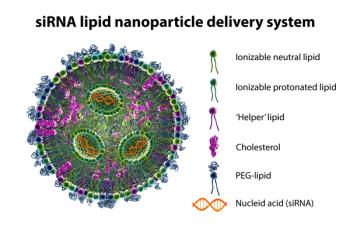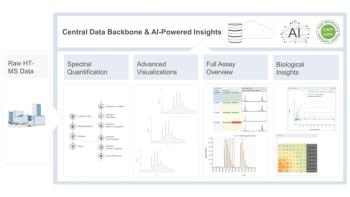
Investigating Oligonucleotide Structure and Diastereomer Separation Using Hydrophilic Interaction Chromatography
Scientists from the University of Geneva in Geneva, Switzerland and AstraZeneca in Mölndal analyzed how HILIC is related to the connections between oligonucleotide structures and diastereomer separation.
Scientists from the University of Geneva in Geneva, Switzerland and AstraZeneca in Mölndal, Sweden studied the links between oligonucleotide (ON) structures and diastereomer separation, and how hydrophilic interaction chromatography (HILIC) is related to these processes. Their findings were published in Analytical Chemistry (1).
Therapeutic ONs have shown promising clinical outcomes for disease indications, including such as Duchenne muscular dystrophy, familial amyloid neuropathies, and macular degeneration (2). The main ON-based therapeutics undergoing clinical trials include single-stranded antisense ONs (ASOs) and double-stranded small interfering ribonucleic acids (siRNAs). Examples of approved oligonucleotide drugs include Vitravene, Mynamro, and Onpattro, among others (3).
Therapeutic ONs have been an effective pharmacological strategy toward previously undruggable targets by regulating gene expression (1). However, unmodified nucleic acids can typically have issues like enzymatic degradation, immune activation, low target affinity, and limited cellular uptake. Chemical modifications must be made to create more effective, stable, and specific ON therapeutics. Therapeutic ONs commonly use phosphorothioate (PS) modifications, which introduce chiral centers and generate ON diastereomers, or compounds that have the same molecular formula and sequence of bonded elements, but which are nonsuperimposable, non-mirror images (4).
For this study, the scientists identified higher-order structures as the major cause of ON diastereomer separation in hydrophilic interaction chromatography (HILIC). HILIC, which is being increasingly recognized for its applicability to ON analysis, has shown promising ON diastereomer separation. The scientists wanted to confirm HILIC as a valuable chromatographic technique for the partial separation of diastereomers in therapeutic full-length, single- and double-stranded PS-modified ONs. Using conformational predictions, melting profiles, mass spectrometry (MS) data, and diverse HILIC settings, the researchers demonstrated that intrinsic higher-order structures (HOSs) of ONs play a pivotal role for partial separation of ON diastereomers. By better understanding the parameters, such as column stationary phase, pore size and temperature, mobile-phase ionic strength, and organic modifier, the scientists hoped to make new insights into modulating, including suppressing, ON diastereomer separation in HILIC.
The researchers used conformational predictions and melting profiles of several representative full-length ONs to first analyze ON folding then ran mass spectrometry and HILIC to underpin the link between their folding and diastereomer separation. By elevating ionic strength to 100 mM AA and reducing the column temperature to 5 °C, diastereomers were enhanced. This preserved the HOS of ONs facilitated diastereomer separation. Confirmatory experiments using ESI-MS revealed a temperature-dependent CSD of ONs, with lower column temperatures favoring ON HOSs. Temperature-dependent findings were corroborated by UV melting curves, which confirmed that mobile phases with high AA levels and low column temperature maintain ON HOSs in solution.
Combining these strategies allowed total suppression of diastereomer separation through modulation of the HILIC mechanism or ON conformation, offering a new degree of flexibility regarding specific application requirements. Analysis of fully PS-modified ONs, which possess hundreds of thousands of diastereomers, or impurity analysis of PS-modified ONs would benefit from the suppression of diastereomer resolution, which often hampers the analysis.
References
(1) Lardeux, H.; Stavengagen, K.; Paris, C.; Dueholm, R.; et al. Unravelling the Link between Oligonucleotide Structure and Diastereomer Separation in Hydrophilic Interaction Chromatography. Anal. Chem. 2024, 96 (24), 9994–10002. DOI:
(2) Xiong, H.; Veedu, R. N.; Diermeier, S. D. Recent Advances in Oligonucleotide Therapeutics in Oncology. Int. J. Mol. Sci. 2021, 22 (7), 3295. DOI:
(3) Egli, M.; Manoharan, M. Chemistry, Structure and Function of Approved Oligonucleotide Therapeutics. Nucleic Acids Res. 2023, 51(6), 2529–2573. DOI:
(4) Diastereomers. BYJU’S 2024.
Newsletter
Join the global community of analytical scientists who trust LCGC for insights on the latest techniques, trends, and expert solutions in chromatography.





